Quick Links:
Travel Guides | Travel Gear | Packing Lists | Resources & Tools
Banff National Park is a wilderness paradise in the heart of the Canadian Rockies. The park’s turquoise lakes, snow-capped peaks, and abundant wildlife offer endless opportunities for outdoor adventure. Visitors can hike through pristine forests, soak in natural hot springs, and ski world-class slopes. The charming town of Banff provides a perfect base for exploring the park’s natural wonders. It’s an ideal destination for nature enthusiasts and outdoor adventurers.
Best Things to Do
Search and Compare flight deals
Deals from your favorite airlines.
Best Hotels in Banff National Park
Why to Go:
- Stunning Natural Beauty: Banff National Park is famous for its awe-inspiring landscapes, including rugged mountain peaks, glaciers, and turquoise lakes. The iconic Lake Louise and Moraine Lake are must-see attractions, known for their vivid blue waters surrounded by towering mountains.
- Wildlife Viewing: The park is home to diverse wildlife, including grizzly bears, black bears, elk, bighorn sheep, and mountain goats. Visitors have the opportunity to observe these animals in their natural habitat, with guided tours and designated viewing areas available.
- Outdoor Activities: Banff offers a wide range of outdoor activities for all seasons. In summer, hiking, mountain biking, rock climbing, and canoeing are popular. Winter brings world-class skiing and snowboarding at resorts like Lake Louise, Sunshine Village, and Mount Norquay.
- Hot Springs: The Banff Upper Hot Springs provide a relaxing experience with mineral-rich waters and stunning mountain views. These natural hot springs have been attracting visitors for over a century.
- Scenic Drives: The Icefields Parkway, connecting Banff to Jasper National Park, is considered one of the most scenic drives in the world. It offers breathtaking views of glaciers, waterfalls, and wildlife.
- Charming Town of Banff: The town of Banff, located within the park, offers a perfect blend of amenities and mountain charm. With its shops, restaurants, and cultural attractions, it serves as an ideal base for exploring the park.
- Photography Opportunities: The park’s dramatic landscapes provide endless opportunities for photography. From sunrise at Vermilion Lakes to the Northern Lights on clear winter nights, Banff is a photographer’s paradise.
- Gondola Rides: The Banff Gondola offers a spectacular ride to the summit of Sulphur Mountain, providing panoramic views of the Bow Valley and surrounding peaks.
- Cultural Experiences: The park has a rich cultural heritage, including indigenous history and the legacy of early explorers. The Whyte Museum of the Canadian Rockies in Banff town offers insights into the area’s cultural and natural history.
- Year-Round Destination: While summer is the peak tourist season, Banff National Park is beautiful year-round. Fall offers stunning foliage, winter brings world-class skiing and winter sports, and spring showcases wildflowers and wildlife.
On a similar note...
-
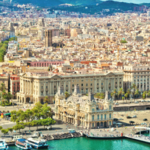
Barcelona, Spain Travel Guide
-
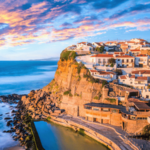
Sintra, Portugal Travel Guide
-

Marrakech, Morocco Travel Guide
-
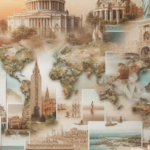
World's Best Places to Visit near me
-

Palm Springs, USA Travel Guide
-
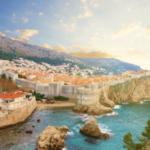
Dubrovnik, Croatia Travel Guide
-
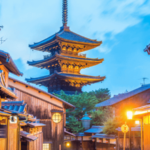
Kyoto, Japan Travel Guide
-
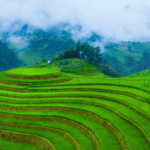
Mù Cang Chải, Vietnam Travel Guide
-
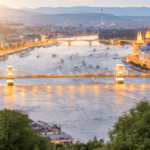
Budapest, Hungary Travel Guide
-

Reykjavik, Iceland Travel Guide
Banff National Park Travel Tips
Best Months to Visit
The best time to visit Banff National Park depends on the activities you want to enjoy. For summer activities like hiking, biking, and canoeing, the best months are from June to August. For winter sports like skiing and snowboarding, visit between December and March. The shoulder seasons (April to May and September to November) offer fewer crowds and lower accommodation rates, but weather conditions can be more variable.
The Weather on Banff National Park
Banff National Park experiences a range of weather conditions throughout the year.
- Summer (June to August): Warm temperatures between 15°C (59°F) and 22°C (72°F) are ideal for outdoor activities. However, evenings can be cool.
- Autumn (September to November): Cooler temperatures ranging from 5°C (41°F) to 15°C (59°F) and stunning fall foliage make this a picturesque time to visit.
- Winter (December to February): Cold temperatures from -15°C (5°F) to -5°C (23°F) with significant snowfall, perfect for winter sports.
- Spring (March to May): Temperatures gradually rise from 0°C (32°F) to 15°C (59°F), with melting snow creating lush landscapes.
How to Save Money on Banff National Park
Travel Off-Peak: Visit during the shoulder seasons (April to May and September to November) for lower accommodation prices and fewer crowds.
Camping: Consider camping in one of the park’s numerous campgrounds instead of staying in hotels or lodges. This offers a more immersive and budget-friendly experience.
Use Public Transportation: The ROAM public transit system provides affordable and convenient transportation within the park and to nearby attractions.
Cook Your Own Meals: If you’re staying in accommodations with kitchen facilities, prepare your own meals to save on dining costs.
Free Activities: Take advantage of free activities such as hiking, wildlife watching, and exploring the park’s natural beauty.
Download for FREE
Travel Budget Planner & Checklist in Excel
Start using the Ultimate Travel Budget Planner and Checklist in Excel today, and embark on your dream trip without the stress of overspending. Happy Travel!
Download!What to Eat
Banff offers a range of dining options, from casual eateries to fine dining restaurants. Local cuisine often features game meats and Canadian specialties:
Alberta Beef: Enjoy a steak or burger made from locally sourced Alberta beef.
Bison and Elk: Try dishes featuring these locally sourced game meats, such as bison burgers or elk steaks.
Maple Syrup Treats: Indulge in Canadian maple syrup, used in a variety of desserts and breakfast items like pancakes and waffles.
Poutine: A Canadian classic, poutine is made with fries, cheese curds, and gravy. Many restaurants offer unique variations of this dish.
Fresh Trout: Sample fresh trout from the region’s lakes and rivers, often served grilled or smoked.

The FREE Packing Guide for All-Inclusive Trips
Download our fillable and printable packing list + tips + more!
Safety
Banff National Park is generally safe, but it’s important to take standard precautions:
Wildlife: Be aware of wildlife, including bears, elk, and wolves. Keep a safe distance, and never feed animals. Carry bear spray when hiking.
Weather: Weather conditions can change rapidly. Dress in layers and be prepared for sudden changes, especially when hiking or camping.
Hiking Safety: Stick to marked trails, carry a map, and inform someone of your plans. Bring sufficient water, snacks, and a first aid kit.
Driving: Roads can be icy in the winter. Drive carefully, and ensure your vehicle is equipped with winter tires.
Health Precautions: Ensure you have travel insurance that covers medical emergencies and activities such as skiing or hiking.
Getting Around
Public Transit: The ROAM public transit system provides convenient and eco-friendly transportation within Banff and to nearby areas. It’s an affordable way to get around without a car.
Car Rentals: Renting a car offers flexibility to explore the park at your own pace. Ensure your vehicle is equipped for mountain driving, especially in winter.
Biking: Banff offers numerous bike-friendly trails and paths. Renting a bike is a great way to explore the area, especially during the warmer months.
Walking and Hiking: Many of Banff’s attractions are accessible by foot. Walking and hiking are excellent ways to experience the park’s natural beauty up close.
Shuttles: Many hotels and lodges offer shuttle services to popular attractions and trailheads. Check with your accommodation for availability.
Entry & Exit Requirements
Visa Requirements: Visitors from many countries, including the USA, EU countries, and Australia, do not need a visa for short visits to Canada. Check the latest visa requirements based on your nationality.
Passport Validity: Ensure your passport is valid for the duration of your stay in Canada.
Customs Regulations: Familiarize yourself with customs regulations regarding what you can bring into and take out of Canada. Common restrictions include limits on alcohol, tobacco, and certain food items.
Parks Canada Pass: To enter Banff National Park, you’ll need a Parks Canada pass. These can be purchased at park entrances or online. There are daily and annual pass options available.
Final Thoughts
Banff National Park, with its breathtaking landscapes, abundant wildlife, and diverse recreational opportunities, is a must-visit destination for nature lovers and outdoor enthusiasts. Whether you’re hiking through pristine forests, skiing down powdery slopes, or simply soaking in the stunning scenery, Banff offers a truly unforgettable experience. By planning your trip wisely and taking advantage of local tips, you can explore the wonders of this majestic park without breaking the bank.
Recommended for You
Traveling is not just about exploring new places; it’s also...
Traveling is a wonderful opportunity to explore new places and...
In the fast-paced world of modern travel, maintaining a consistent...
Color plays a significant role in defining our personal style,...
Author

Cotripia is your gateway to elevated travel. We serve as your portal to the world of stylish travel, exquisite beauty products, luggage, and all the vital travel essentials. Furthermore, we provide an array of valuable resources, including expertly crafted packing guides, meticulous checklists, insider tips, enlightening ebooks, and much more.
View all posts








